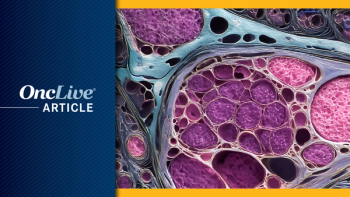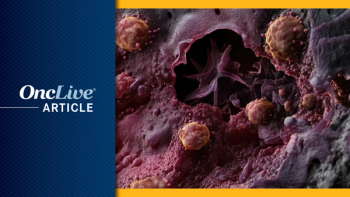
Preclinical Observations on Eribulin for Breast Cancer
Transcript:Joyce O’Shaughnessy, MD: There has been a lot of work done looking at the preclinical mechanisms of action, because we clinicians have noticed that eribulin really was highly nonclass-resistant in patients who we knew we could not get control of this significant liver disease with any other agents in. When eribulin first came out, we said, “Whoa, this is really different!” Because you’d have this diffusely infiltrated disease. Proliferative disease tends to be more nodule, we didn’t have anything to really stop that. But eribulin can work very, very quickly.
The question was, “Why?” What was the extra biology going on there? Some very interesting observations have come out and have been published. Now one of them is around angiogenesis, because it almost looked like the blood supply of the cancer was being very rapidly taken away from the cancers—perhaps why it responded so quickly. It turns out in preclinical models that, in fact, the eribulin does have a strong antiangiogenic effect. It can help remodel the vasculature and make it more normal: less leaky, less torturous, and delivering higher levels of oxygen—higher oxygen saturations—in the tumor following eribulin therapy, which is really quite interesting.
Mechanism-wise, it actually decreases levels of TGF-beta; transforming growth factor beta is a highly proangiogenic substance in breast cancer. Eribulin decreases that, and it’s stopping this neovascularization, which is a very haphazard way of making microtubules that deliver very, very poor oxygen. Because they’re very leaky and the blood is leaking out, it makes the cancer more and more dense and difficult to penetrate. The eribulin normalizes the vasculature by decreasing this neoangiogenic substance, TGFA, along with other mechanisms.
There is this interesting vascular remodeling with an increase of oxygen saturation. That’s good because it’s less wounding to the cells. They are less metastatic when they have oxygenation, and they don’t have to upregulate the survival programs quite so much. It may be that it helps with chemotherapy sensitization. I don’t think we know that for sure, but it may be that it’s helping. Certainly, with more drug delivery and with some normalization of the vasculature, you’re getting more oxygen, and you’re getting more chemotherapy in there to the tumor as well.
Mark Pegram, MD: Even though a lot of time and energy is spent in the laboratory trying to understand mechanistically how our therapeutics work in cancer, at the end of the day when the exam room door is closed and you’re with your patient and perhaps their family, I’m really concerned about getting responses. The mechanisms, are secondary in that moment. I just want treatment that’s going to be effective, well-tolerated, and safe for my patients. That’s the overarching consideration at the end of the day, and that’s what’s most important and most impactful for patient care: how are the patients going to respond, and how are they going to tolerate the therapy? That’s really a critical decision point when deciding on what type of treatment to use next. How are they going to respond to it? How well are they going to tolerate it? Do they have comorbidities that might have particular problems that need to be acted upon? At the end of the day, the mechanisms, while interesting, take a back seat to the more humanistic concerns of just wanting your patients to get better.
If we look very closely at other classes of chemotherapeutics, we might see impacts on vascular remodeling. That has been shown with other chemotherapeutics already in the literature. For example, the taxanes have some of those properties, epithelial—mesenchymal transition also. There are other cytotoxic classes that can impact these cellular processes. It’s probably not restricted to just one class of chemotherapeutic, but it’s certainly not a principle of every one of them either. I think it bears a closer look in the laboratory: to take a look at these different types of properties and maybe revisit them. Now that we understand some of these pathways and the biology behind some of these pathways, maybe there will be more therapeutic opportunities and new targets that can be identified through such studies.
Joyce O’Shaughnessy, MD: With regard to angiogenesis and other agents besides eribulin that may have an antiangiogenic effect, there has been a lot of work with paclitaxel. Dr. George Sledge and others did a lot of work looking at the antiangiogenic effects of paclitaxel. Indeed, paclitaxel does inhibit angiogenesis and some of the migration and assembly of the endothelial cells, as they need to make new vasculature. It’s not unique to eribulin. I’m not aware, for example, of ixabepilone or vinorelbine—other microtubule targeted agents that they’ve looked at with those questions preclinically. But certainly, the paclitaxel has antiangiogenic effects.
Transcript Edited for Clarity

























































































